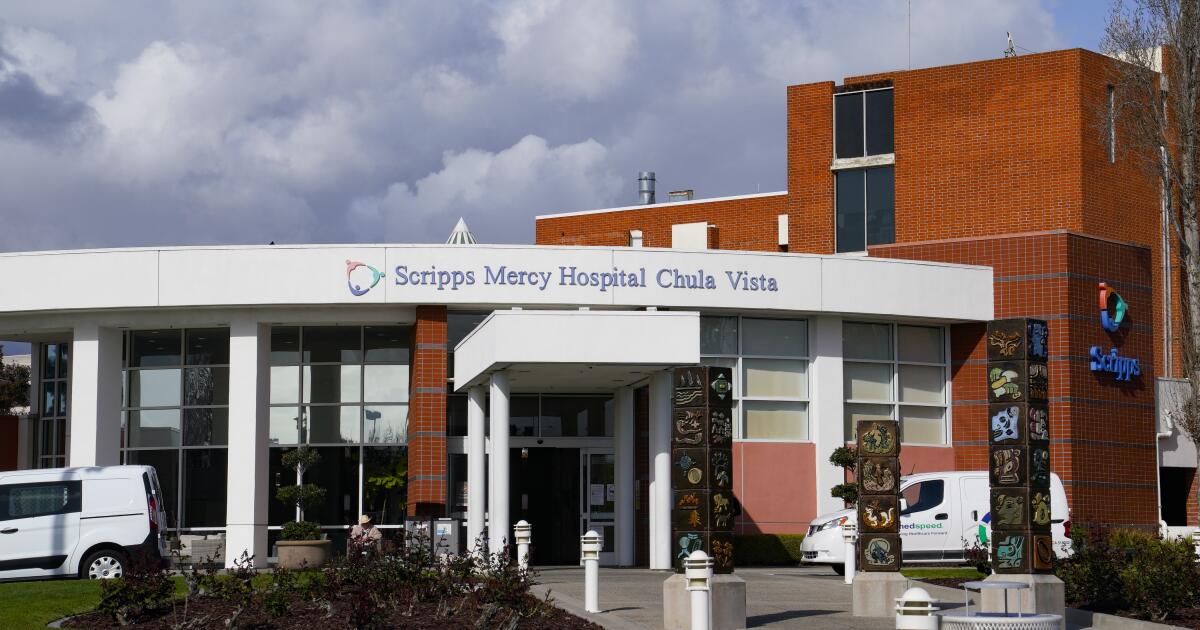

After an initial discussion with medical providers in San Diego County, Supervisor Terra Lawson-Remer says she is convinced that the region is leaving Medi-Cal reimbursement on the table, and that’s money that could be used to improve the reimbursement rates that fund care for nearly 1 million San Diego County residents.
On Tuesday, the supervisor will ask her colleagues to take a slate of actions geared toward making improved Medi-Cal reimbursements a board priority. Medical providers have long been reluctant to participate in the government’s health plan for needy residents citing rates that do not cover the cost of doing business. According to the American Hospital Association, reimbursements covered only 88 cents of every dollar spent on caring for patients in 2020.
The supervisor said last week that conversations with county staff and the heads of local health care providers have led her to believe that “what we’re receiving and spending per-capita doesn’t align with what we see in other counties.”
Medi-Cal, called Medicaid everywhere but California, matches local funds with federal dollars, and Lawson-Remer said that many feel that there may be more effective strategies that could be employed to draw more matching funds to the region.
“I don’t think any of us are under any illusion that we’re getting cheated; it has to do with the failure of local government and my predecessors for not creating a strategy locally for how we structure our Medi-Cal reimbursement to ensure that we’re maximizing our federal share,” Lawson-Remer said.’
It is well known, said Melora Simon, associate director of people-centered care for the California Health Care Foundation, that federal funding can vary based on a variety of factors especially as it pertains to the parts of the larger Medi-Cal program that are directly run by county governments. Behavioral health services are a key example, but there are others, such as in-home supportive services for residents unable to live independently.
“Figuring out how to obtain the federal match in areas where a county has responsibility, that is a feature of California’s Medicaid system,” Simon said.
Reimbursement to private medical providers, though, is less directly influenced by the interplay of local and federal funding. The state, Simon notes, makes a separate calculation of the rates it pays the private health insurance companies that manage the bulk of payments to providers.
“Obtaining the federal match is sort of managed by the (state) Department of Health Care Services for Medi-Cal managed care plans,” Simon said. “You definitely don’t lobby for it locally.”
The state does allow counties to choose how they want to handle managed care companies operating within their boundaries. Counties can create their own plans and contract directly with the state, have a county plan and a commercial plan, allow two commercial plans or allow several plans to operate. Only San Diego and Sacramento counties allow more than two plans, as a recent effort to reduce that number was only partially successful.
An annual listing of rates for each Medi-Cal plan operating in each county shows that there can be variation in what individual plans receive. This year, providers are already benefiting from some changes connected to the state’s “CalAIM” Medi-Cal reform program. Reimbursement for primary care, obstetrics and certain kinds of mental health services were increased starting Jan. 1.
Chris Howard, chief executive officer of Sharp HealthCare, said that several people involved with the local Medi-Cal effort believe that there are ways to increase local reimbursements through the matching process.
“You know, California has not increased Medi-Cal base rates for 12 years, and that’s just not sustainable,” Howard said. “Sharp HealthCare, for instance, is paid 70 cents on the dollar for every service we provide to a Medi-Cal patient, and it creates this terrible shell game of trying to find other ways to make up reimbursement.”
He said states like Oklahoma have made progress in thinking creatively to close the funding gap.
“When you look across the country, creative approaches have been deployed, and it just makes us realize that there has to be a better way to find matching dollars that can find their way through the reimbursement chain to providers to boost those base rates,” Howard said.
Lawson-Remer’s proposal would create a special committee, led by herself and Supervisor Monica Montgomery Steppe, to review anticipated Medi-Cal research and recommendations made by those affected by the system, such as community clinics, health systems, consumer advocates and labor unions. The agenda item also asks the board to invest in a formal study of Medi-Cal reimbursable services, both those offered by the county and those that might “improve access to and quality of healthcare.” This work is estimated to cost an additional $700,000 in the coming year, adding onto already funded studies of specific Medi-Cal programs.






